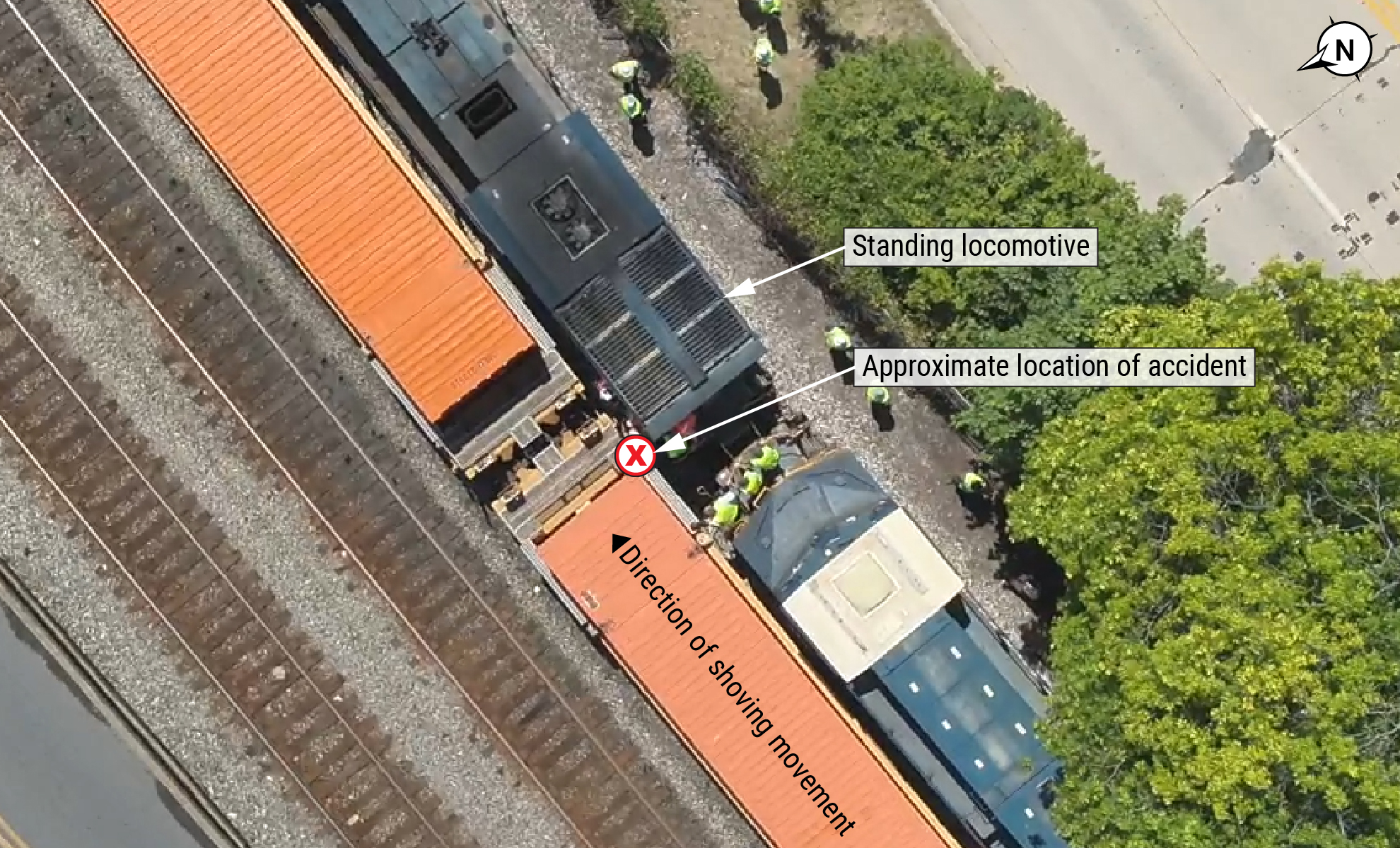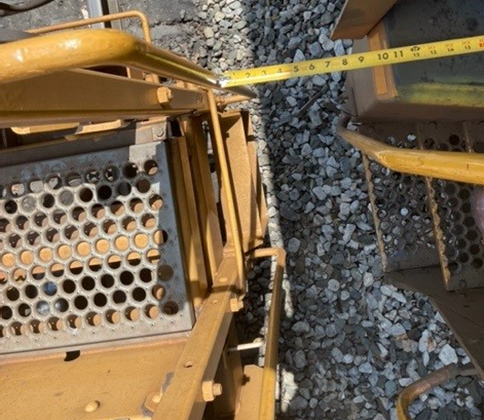
WASHINGTON — A National Transportation Safety Board report on the Aug. 6 accident that claimed the life of a CSX Transportation conductor trainee in Cumberland, Md., found that there was only 7 inches of clearance between the well car the trainee was riding and a locomotive parked on an adjacent track.
“The conductor trainee was riding on the side of an intermodal railcar on CSX train I13706 that was moving eastward on the track when he struck the handrail of a standing locomotive on an adjacent track. He was taken to a nearby hospital, where he later died,” the NTSB said in its initial report today.
The crew of train I137 consisted of an engineer, conductor, and the conductor trainee. The train, composed of two locomotives and three loaded articulated intermodal cars, was making a shove move at 11:42 p.m. in Cumberland Yard at the time of the accident.
“Preliminary information indicates the conductor was directing the eastward shoving movement by radio to the engineer, who was in the locomotive cab. The conductor was positioned at the leading end of the movement, riding on a ladder on the south side of the final railcar in the consist. The conductor trainee was riding on the next ladder back on the same side of the same railcar. As the train reversed down the track at approximately 9 mph, it approached three locomotives parked on an adjacent track, and the accident occurred. Post-accident measurements taken by the National Transportation Safety Board on scene indicated about 7 inches of clearance between train I13706 and the standing locomotives,” the report says.

The NTSB investigators examined data from the locomotive event recorder and cameras; reviewed radio recordings, photos, and drone video footage; conducted interviews; and performed accident re-enactments.
The NTSB’s investigation is ongoing and will focus on CSX employee training and close clearance identification practices across the rail industry.
“As a result of this accident, on Aug. 11, 2023, the Switching Operations Fatalities Analysis Working Group issued an alert advising railroad employees to remain vigilant when mentoring inexperienced employees and to conduct job briefings whenever a job changes. On August 16, 2023, the Federal Railroad Administration issued Safety Bulletin 2023-05: Shoving Movement Close Clearance Fatality, which urges railroads to review employee training programs that address riding equipment in close-clearance situations and to consider marking close or no clearance areas with highly visible signs,” the NTSB noted.
The accident occurred a week after CSX and the SMART-TD union announced a partnership to extend conductor training by a week in order to provide new hires with more hands-on experience prior to beginning on-the-job training. The victim, conductor trainee Travis Bradley, was hired in June.
The fatality prompted the railroad to impose a safety stand down for its 350 conductor trainees, who were sent back to their home terminals for a half day of training on critical rules and riding equipment.














Is 7″ the normal clearance between the tracks or were the locomotives too close to the clearance point at a switch?
7 inches of clearance is unconscionable in the modern age of railroading. I once worked in a yard with tight clearances. We were instructed to never attempt to ride the side ladder. This yard was designed in the 1870s when a brakeman’s job was mostly spent on top of the car’s running boards. At that time, close clearances were designed as a safety enhancement because that made it easier to cross over equipment on adjacent tracks.
When riding the top of railcars was banned in the 1960s, railroads should have begun a program of widening track spacing. Some modernization did happen, but legacy yards with tight clearances persist to this day.
My heart goes out to family, friends and co-workers of Travis Bradley. Rest in Peace